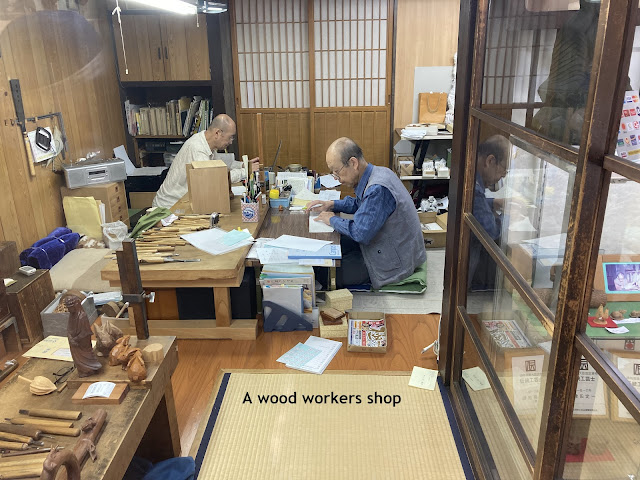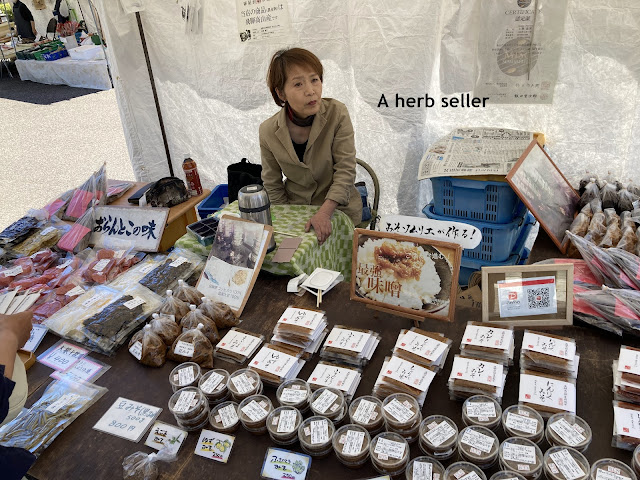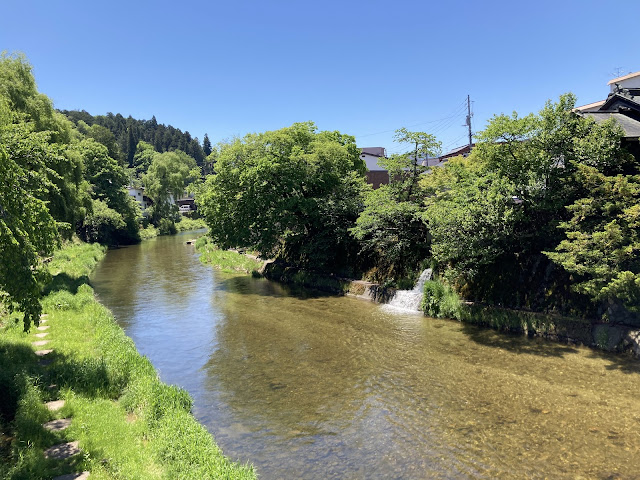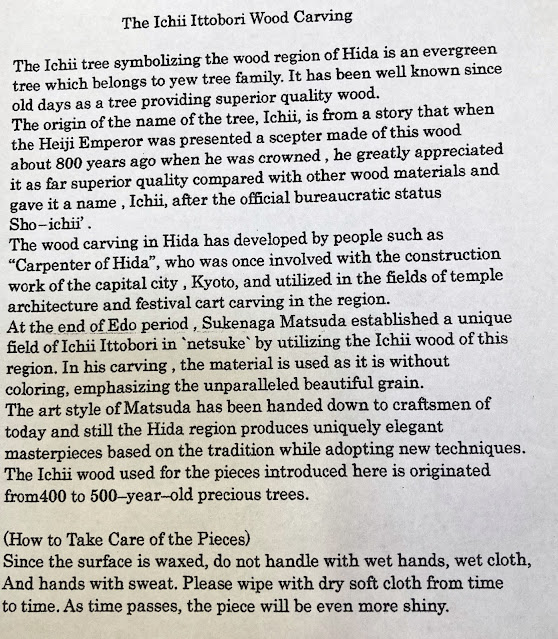Having seen Tokyo, Kyoto and Nara on a previous
visit, in the early 1970’s, I was keen on seeing parts of Japan which are not
on the tourist path. Hence, we chose Kanazawa, Takayama and Shirakawa Go. See
my travel blogs on those cities.
Takayama Station and the adjacent Takayama Hida Bus Center are located about a 15 min walk from Takayama's famous old town on the opposite side of Miyagawa River. Most of Takayama's attractions are within easy walking distance in the city center.
Takayama was established in 1875. After a merger of the towns and villages, Takayama Town became Takayama City in 1936. In 2005, the city merged with nine surrounding towns and villages and became the largest city in Japan. The city covers an area larger than Tokyo !!
Takayama is in the mountainous Hida region of Gifu prefecture. To differentiate it from other places named Takayama, the city is also commonly referred to as Hida-Takayama. Takayama retains a traditional touch like few other Japanese cities, especially in its beautifully preserved old town.
 To see a city
efficiently, you need to have a good local guide. We were fortuneate in that we
had Mr Yoichiro Yamakoshi of Happy Plus Tours +81 70 4107 5301 email yamakoshi@happy-plus.co.jp.
We had a booking with the agency and as the guide could not come for some
reason, the owner decided to take the tour instead. He was really very good; taking time to explain to us all the points in the itinerary. It lasted
45 minutes and we saw the very traditional parts – beginning with these strange
wooden statues made from Yew trees. We saw a workshop with elderly artists
doing calligraphy which are collected and then sold off periodically in an
auction.
To see a city
efficiently, you need to have a good local guide. We were fortuneate in that we
had Mr Yoichiro Yamakoshi of Happy Plus Tours +81 70 4107 5301 email yamakoshi@happy-plus.co.jp.
We had a booking with the agency and as the guide could not come for some
reason, the owner decided to take the tour instead. He was really very good; taking time to explain to us all the points in the itinerary. It lasted
45 minutes and we saw the very traditional parts – beginning with these strange
wooden statues made from Yew trees. We saw a workshop with elderly artists
doing calligraphy which are collected and then sold off periodically in an
auction.There was a shrine
which had the unusual rolled up folding ladder, the dragon shaped water spout, the open market, the Jinya square, and lots of
small handicraft shops for us to peruse later.
In the Edo period (1603 to 1868) at Takayama Jinya – The Kanamori Clan, the feudal leaders who ruled Hida Province, relocated to Kaminoyama in Dewa Domain (now part of Yamagata Prefecture and Akita Prefecture) at the order of the Edo Shogunate in 1692. In the same year, the Edo Shogunate put Hida under its direct control and established a government office there. The provincial governor (provincial magistrate from the 12th generation) dispatched by the Shogunate performed the official duties involved in ruling over Hida (e.g., the administration, policing and judicial functions). Takayama Jinya is the only such site of a provincial governor / magistrate’s office – which are said to have numbered 60 across Japan in the closing days of the Shogunate – where the main building still remains today
The Jinya is now a museum with tatami
rooms on view. We did not go inside.
Two morning markets are held in Takayama on a daily basis from around 6:00 (one hour later in winter) to noon: the Miyagawa Market along the Miyagawa River in the old town, and the Jinya-mae Market in front of the Takayama Jinya.
The stands
sell local crafts, snacks and farm products such as vegetables, pickles and flowers. There is
typically a pleasant atmosphere around the markets, as tourists and
locals alike saunter from stall to stall purchasing goods and food and talking.
Sanmachi Suji - Central street of Takayama's old town. Sanmachi Street, the most retro spot in Takayama City, Gifu Prefecture. This area is also known as "Little Kyoto" because of the preservation of the town construction from the Edo period.
The southern half of
the old town, especially the Sannomachi Street, survives in a particularly
pretty state with many old homes, shops, cafes and sake breweries,
some of which have been in business for centuries.
The southern half of the old town, especially the Sannomachi Street, survives in a particularly pretty state with many old homes, shops, cafes and sake breweries, some of which have been in business for centuries. Several homes in the old town open their doors to the public. They provide a glimpse behind the facade into the former living quarters of the local merchants and exhibit traditional household goods and local arts and crafts.
Kusakabe Heritage House (Kusakabe Mingeikan) is one of Takayama's oldest merchant homes open to the public. Its former residents, the Kusakabe family, used to be successful money lenders. This merchant and moneychanger's house, dating from the 1890s, showcases the striking craftsmanship of traditional Takayama carpenters. Inside is a collection of folk art. Rumour has it that a Rockefeller tried to buy the property after WWII; his offer was politely declined.
This is a large house
with an upper storey. I did not want to remove my shoes, yet again !!, so I just
walked around the lower floor area without the tatami mats. Here you see the
formal drawing room area.
This is the Family room
with the toys
Several homes in the
old town open their doors to the public. They provide a glimpse behind the
facade into the former living quarters of the local merchants and exhibit
traditional household goods and local arts and crafts.
Takayama gained importance as a source of high-quality timber and highly skilled carpenters during the feudal period. For these important resources, the city was put under direct control of the shogun and enjoyed quite a bit of prosperity considering its remote mountain location.
After so many days
eating Japanese or western cuisine we came across this Nepali restaurant out in
the boondocks of Japan ! What a relief it was to have fresh home style naan,
subji and other delightfully tasty and freshly cooked items. The place was
packed with clientele – essentially Asian with a few westerners. The service
was good.
It was an interesting trip and I am sure
that my family enjoyed this excursion into the Japanese countryside with a
fascinating past.


















































